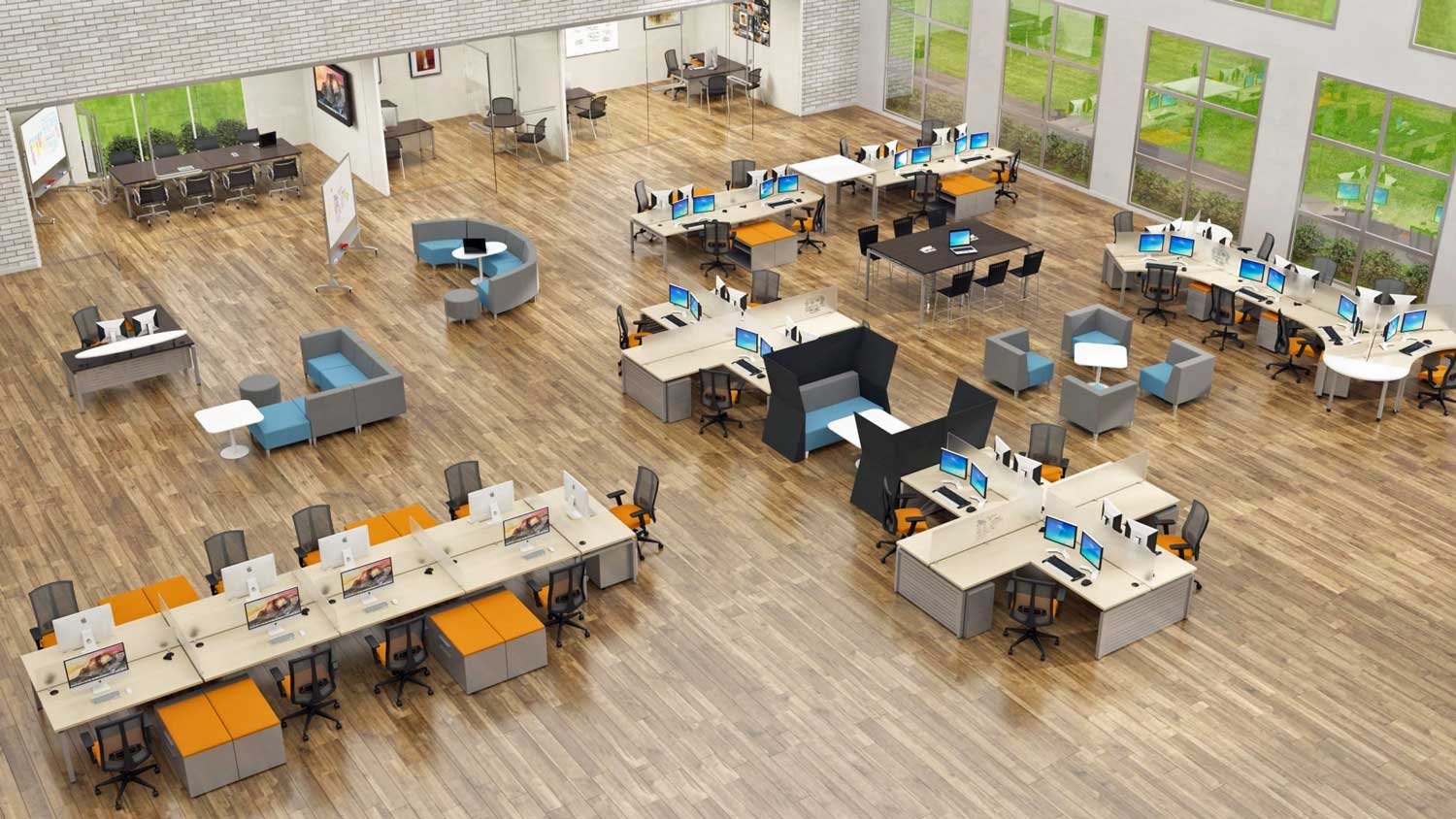Not long ago, open office floor plans were the biggest trend in office spaces. Businesses believed they could spend less money creating the space, and also foster collaboration and improve employee morale at the same time. However, the plan seems to have backfired. Open floor plans make no allowance for personal space, or the need for a quiet place to work. Instead of increasing productivity and satisfaction, employees complain of constant distractions and irritation.
Problems with the Open Floor
Specific problems vary from office to office—not all employees working in open office plans experience as many issues with noise or problems with visual distractions. However, there are common problems associated with most open floor offices:
- Productivity decreases. This happens for numerous reasons, but is generally due to the large number of distractions that occur when many people work in shared spaces.
- Employee happiness falls. Most people like to be able to work in peace, and open offices deny them that ability.
- Distractions abound. Distractions destroy motivation, interrupt production, and generally annoy employees.
- Employees are sick more. Open offices not only increase stress but are also a perfect platform for spreading illnesses.
- They foster mistrust. Employees sometimes believe open floor plans mean their managers don’t trust them and want to be able to look over their shoulders.
- Competitions arise. In any open office plan, there are always a few private offices for the higher-ups. Employees will sometimes fight over who gets a newly available private office.
- They end up costing more. Yes, open floor offices cost less to build. However, because they lower employee productivity so steeply, they quickly result in a net loss.
Restoring Order and Productivity
Companies can do several things to increase productivity and employee morale. These include:
- Flexible work schedules. Companies that allow their employees to telecommute can reduce the number of people working in an open office space, leading to fewer distractions and an increase in productivity. Flexible work schedules also raise employee morale.
- Workplace culture. Feeling like part of a larger whole improves employee satisfaction and motivation. Open floor offices can allow for a strong company culture to develop, and organizations need to encourage this.
- Noise-canceling headphones go a long way toward eliminating noisy distractions that discourage workers.
- Movable furniture and private spaces. An open floor plan is all about allowing people to collaborate. Movable furniture enables employees to work together as a group, and then separate for individual work. This can help remove distractions and still foster collaboration.
- Hybrid floor plans. Similar to having an open floor plan with mobile furniture, a hybrid floor plan creates spaces for groups and more private areas for individuals.
- Alternatives to sitting. Sitting for too many hours a day is unhealthy. Moving around promotes blood flow to the brain, increases thinking capabilities as well as improves mood. Businesses can include seating alternatives such as yoga mats, treadmills, and standing workstations as part of an open office floor plan.
- Free seating. If a company wants to promote working relationships and collaboration with an open office, they might want to avoid specific seating arrangements. Allow people to discover which colleagues they work best with an d productivity w ill increase.
Open office floor plans have tremendous potential, but managers and business leaders must carefully assess what kind of office plan suits the work done in the office and the company culture as a whole. Done well, an open office can strike a fine balance between flexibility and productivity.



